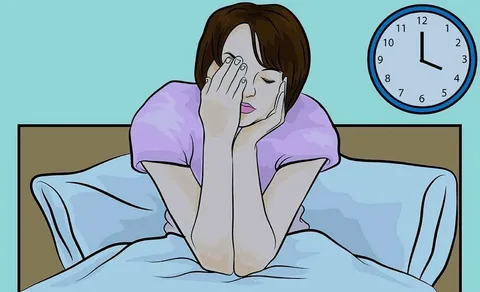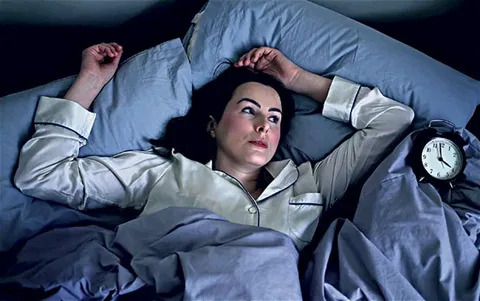Counseling’s Function in the Treatment of Anxiety Disorders

Anxiety disorders are among the most common mental health conditions affecting people worldwide. From generalized anxiety disorder (GAD) to specific phobias, panic disorder, and social anxiety disorder, these conditions can significantly impact a person’s quality of life. Therapy plays a critical role in treating anxiety disorders, offering individuals strategies to manage symptoms, understand the root causes, and ultimately lead more fulfilling lives. In this article, we’ll explore the different types of therapy used to treat anxiety disorders, discuss their benefits, and consider how therapy can be an effective tool for individuals seeking to regain control over their mental health.
Understanding Anxiety Disorders
Before diving into the role of therapy, it’s essential to understand what anxiety disorders are and how they manifest. Anxiety is a normal response to stress or danger, but when it becomes excessive, persistent, and interferes with daily life, it may indicate an anxiety disorder. Typical signs and symptoms include of:
Persistent worry or fear that is disproportionate to the situation
Physical symptoms like increased heart rate, sweating, trembling, or muscle tension
Avoidance of situations or activities that cause anxiety
Difficulty concentrating or sleeping
There are many different types of anxiety disorders, and each has its own special traits. Generalized anxiety disorder involves excessive worry about various aspects of life, while social anxiety disorder is characterized by intense fear of social situations. Panic disorder involves sudden, unexpected panic attacks, and specific phobias are intense fears of specific objects or situations, such as flying or spiders.
The Importance of Therapy
Therapy, or psychotherapy, involves working with a trained mental health professional to explore thoughts, feelings, and behaviors that contribute to anxiety. It provides a safe and supportive environment where individuals can learn coping strategies and develop healthier patterns of thinking. Therapy can be effective on its own or in combination with medication, depending on the severity of the anxiety disorder and individual preferences.
Cognitive-Behavioral Therapy (CBT)
One of the most widely used and researched forms of therapy for anxiety disorders is cognitive-behavioral therapy (CBT). CBT focuses on identifying and challenging negative thought patterns that contribute to anxiety, as well as developing new behaviors and coping skills.
Key Components of CBT Cognitive Restructuring: This involves recognizing and challenging irrational or distorted thoughts that fuel anxiety. By reframing these thoughts, individuals can reduce their impact on emotional well-being.
Behavioral Techniques: CBT incorporates behavioral strategies like exposure therapy, where individuals gradually face their fears in a controlled manner. This helps reduce avoidance and build confidence in handling anxiety-inducing situations.
Relaxation and Mindfulness: CBT often includes relaxation techniques such as deep breathing and progressive muscle relaxation, as well as mindfulness practices to promote present-moment awareness and reduce anxiety.
Acceptance and Commitment Therapy (ACT)
Acceptance and Commitment Therapy (ACT) is another therapeutic approach used to treat anxiety disorders. Unlike CBT, which focuses on changing thoughts, ACT emphasizes accepting difficult thoughts and feelings while committing to actions aligned with personal values. The goal is to reduce the impact of anxiety on one’s life by fostering psychological flexibility.
Key Components of ACT Acceptance: Rather than trying to eliminate anxious thoughts, ACT encourages individuals to accept them as part of the human experience. This reduces the struggle against anxiety and allows individuals to focus on what truly matters.
Cognitive Defusion: ACT teaches techniques to detach from negative thoughts and view them from a different perspective. This helps reduce their power over emotions and behavior.
Values-Based Action: ACT encourages individuals to identify their core values and take steps toward living a meaningful life, even in the presence of anxiety.
Dialectical Behavior Therapy (DBT)
Dialectical Behavior Therapy (DBT) is a form of therapy that combines cognitive-behavioral techniques with concepts from mindfulness and acceptance. While originally developed to treat borderline personality disorder, DBT has proven effective in treating anxiety disorders, particularly when they coexist with other mental health conditions.
Key Components of DBT Mindfulness: DBT emphasizes mindfulness practices to help individuals stay present and non-judgmental, reducing the intensity of anxious thoughts.
Emotion Regulation: This component involves learning skills to manage intense emotions and reduce impulsive reactions to anxiety.
Distress Tolerance: DBT teaches techniques to cope with distressing situations without resorting to avoidance or harmful behaviors.
Interpersonal Effectiveness: This involves developing skills to communicate effectively and maintain healthy relationships, which can be particularly beneficial for those with social anxiety disorder.
Psychodynamic Therapy
Psychodynamic therapy explores the underlying unconscious factors that contribute to anxiety disorders. This approach involves delving into early life experiences, unresolved conflicts, and interpersonal dynamics that may play a role in the development of anxiety. Although less structured than CBT or ACT, psychodynamic therapy can provide valuable insights and promote long-term personal growth.
Key Components of Psychodynamic Therapy
Exploration of Unconscious Thoughts: Psychodynamic therapy involves uncovering hidden thoughts, memories, and feelings that may contribute to anxiety. This exploration helps individuals gain a deeper understanding of their internal conflicts.
Free Association and Dream Analysis: These techniques allow individuals to express thoughts and dreams freely, providing therapists with insights into the subconscious mind.
Transference and Countertransference: Psychodynamic therapy explores the dynamics between the therapist and client, which can mirror other relationships in the client’s life. This can reveal patterns of behavior that contribute to anxiety.
Choosing the Right Therapy
Selecting the most appropriate therapy for treating anxiety disorders depends on various factors, including the type of anxiety disorder, its severity, and personal preferences. Often, a combination of therapeutic approaches is used to achieve the best outcomes. It’s crucial to work with a qualified mental health professional to determine the most suitable treatment plan.
The Role of Medication
While therapy plays a central role in treating anxiety disorders, medication can also be part of the treatment plan. Medications such as selective serotonin reuptake inhibitors (SSRIs) or benzodiazepines may be prescribed to help manage severe anxiety symptoms. Combining medication with therapy can be particularly effective for individuals with severe or treatment-resistant anxiety disorders.
The Benefits of Therapy
Therapy offers numerous benefits for individuals with anxiety disorders, including:
Improved Coping Skills: Therapy equips individuals with practical tools to manage anxiety, allowing them to navigate challenging situations more effectively.
Increased Self-Awareness: Through therapy, individuals gain a deeper understanding of their thoughts, feelings, and behaviors, leading to personal growth and self-acceptance.
Reduced Avoidance Behaviors: Therapy helps individuals confront their fears and reduce avoidance, enabling them to engage in a wider range of activities.
Enhanced Emotional Regulation: By learning to manage intense emotions, individuals experience greater emotional stability and reduced anxiety.
Improved Relationships: Therapy can enhance interpersonal skills and reduce social anxiety, leading to healthier relationships with others.
In summary
Therapy is a vital tool in the treatment of anxiety disorders, offering individuals the opportunity to explore their thoughts, develop coping strategies, and work toward a more balanced and fulfilling life. With various therapeutic approaches available, individuals can choose the method that aligns with their needs and preferences. Whether used alone or in combination with medication, therapy can be a transformative experience, helping individuals take control of their anxiety and move toward a brighter future. If you or someone you know is struggling with an anxiety disorder, reaching out to a mental health professional can be the first step toward healing and recovery.



